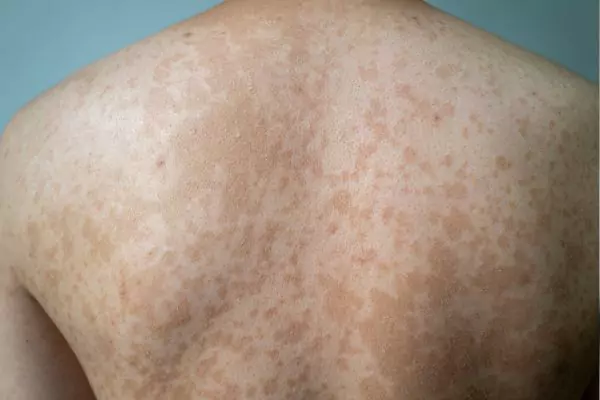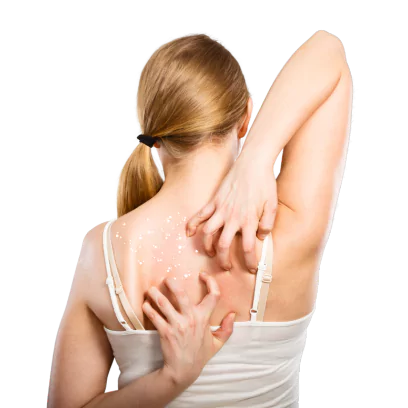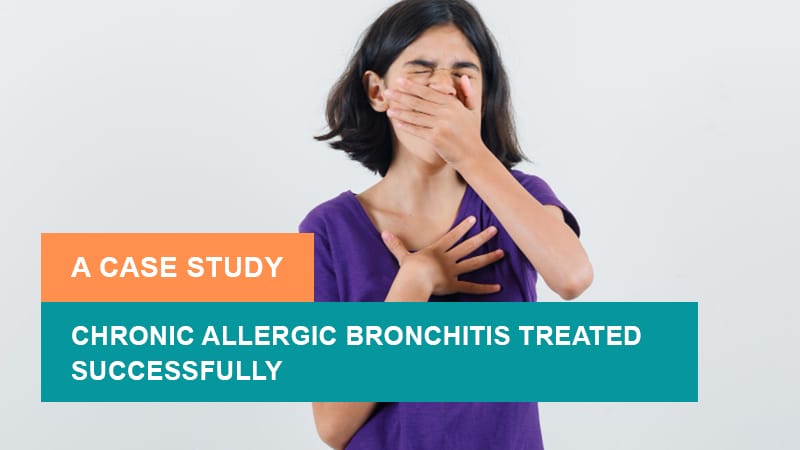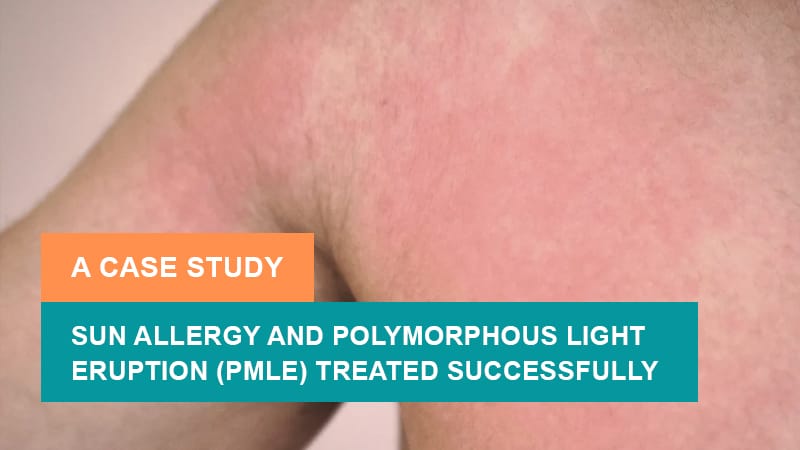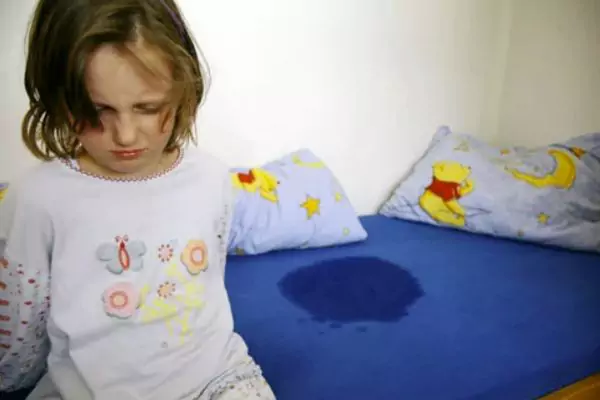On This Page
Tinea Versicolor – Causes, Symptoms and Ayurvedic Treatment
परुषंतनुरक्तान्तमन्त:श्यावंसमुन्नतम् l
सतोददाहरुक्लेदंकर्क्कशै: पिडकैश्चितम् ll (अ.हृ.नि. १४/१८) ll
Tinea Versicolor, also known as Pityriasis versicolor is a frequent, benign and superficial fungal infection of the skin. The most frequently affected sites are the trunk, proximal extremities and neck whose diagnosis is often done on clinical grounds alone. It occurs more frequently in young adults and adolescents due to the increase of sebum production by sebaceous glands.
It is caused by Malassezia also known as Pityrosporum which is a dimorphic lipophilic fungus. It has been reported worldwide, but it is more common in warm and humid conditions.
Master Charak has explained this condition under various types of kushtas along with elaborate management of the same. It is correlated with Rikshajihva in Ayurveda which is caused due to the vitiation of Vata and Kapha doshas along with Pitta dosha. Both these doshas manifest in the skin which lead to accumulation of toxins.
These toxins thus get accumulated in the deeper tissues of the skin such as rasa, rakta, mamsa and lasika. Thus, it is a tridosha disorder having the predominance of Vata and Kapha doshas.
Causes of Tinea Versicolor
There are a number of factors that trigger the growth of the fungus. These are:-
- Weakened immune system
- Diabetes
- Oily skin
- Hormonal changes
- Excessive perspiration is common in hot and humid climate
Symptoms of Tinea Versicolor
- Appearance of red rashes in the form of rings on the skin.
- Skin discoloration including nails on the chest, upper arms, and neck which may appear lighter or darker than normal.
- Itching and burning in the groin area.
- Cracked skin and mild itching between the toes.
Ayurvedic Reference of Tinea Versicolor
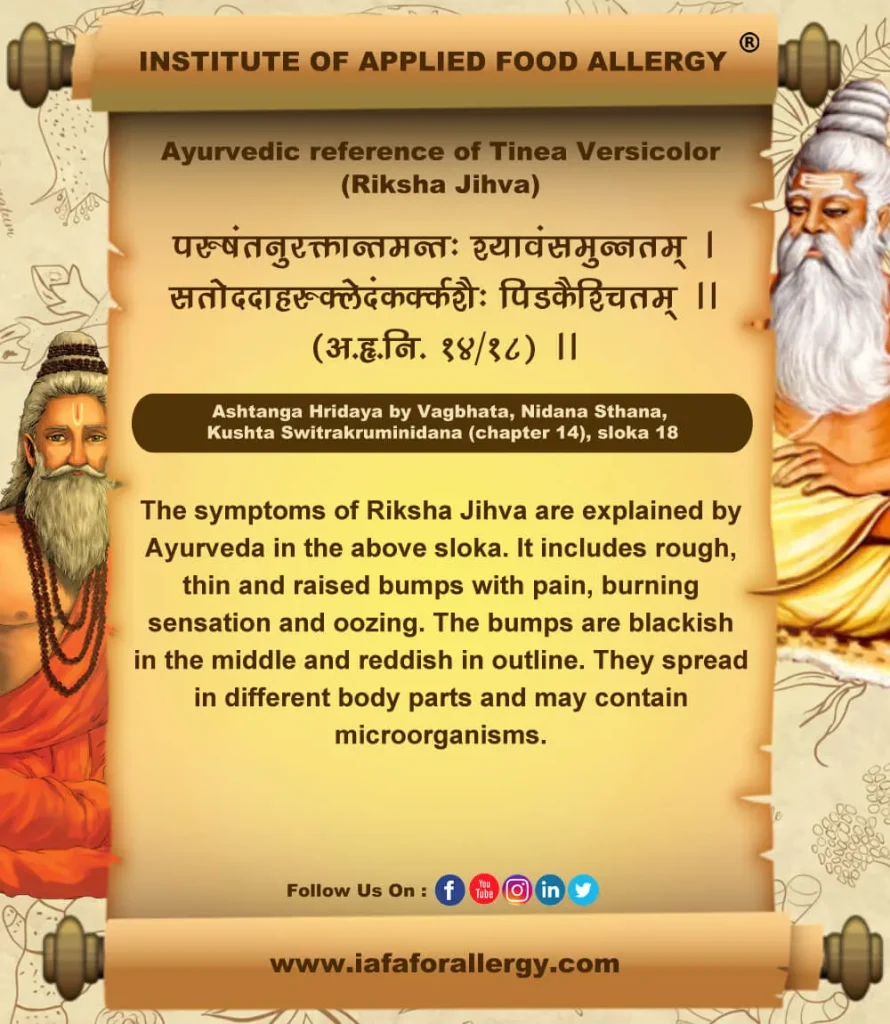

“Dr. Gupta’s IAFA is providing magnificent contributions around the globe especially in the field of Ayurvedic allergic management. Institute of Applied Food Allergy® is successfully managing fungal infections through classical Ayurvedic measures. Ayurvedic system of medicine is the only natural friendly measure for curing fungal infection naturally and completely”.
Commitment to authentic Ayurvedic treatment…!!! Dr. Gupta’s IAFA for your future health.
– Dr. Sahil Gupta (B.A.M.S., M.H.A.)
Ayurvedic Allergy Specialist
CEO & Founder of IAFA®
At last, Easier Tinea Versicolor Management

Trusted by
More than 90,000 Patients

Convenient
at-Home Treatments

9.2 / 10
Customer Satisfaction Score
Ayurvedic Treatment of Tinea Versicolor
Ayurveda incorporates internal as well as external medications for the treatment of Tinea Versicolor. The unique Ayurvedic treatment protocol ensures a complete cure for the condition.
Internal Medicines for Tinea Versicolor
- Panchatiktam Kwatham
- Patoladi Kwatha
- Patolamooladi Kwath
- Nimbadi Kwatha
- Kaisora Gulgulu Tablet
- Vilwadi Tablet
- Dooshivishari Gulika Tablet
- Manibhadra Gulam
- Avipathi Churnam
- Triphala Churna
- Khadirarishta
- Patolasavam
- Nimbamritasavam
External Medications for Treat Tinea Versicolor
- Triphala Churna
- Nimbadi Churna
- Nalpamaradi Choornam
- Aragwadhadi Kwatham
- Guduchyadi Kwatham
- Tuthadi Tablet
- Rasothamadi Lepam
- Dhanyamla
- Dinesavalyadi Keram
- Vitpala Kera
External Therapies to Treat Tinea Versicolor
- Swedana (Sweating Therapy)
- Padaavagaha (Foot Bath)
- Lepa (Medicinal Paste)
- Abhyanga (Oil Massage)
- Kshalana (Washing)
Purification Therapies to Treat Tinea Versicolor
- Virechana (Purgation)
- Vamana (Emesis)
- Raktamokshana (Blood-Letting)
Single Herbs to Treat Tinea Versicolor
- Nimba (Azadirachta Indica)
- Patola (Trichosanthes Dioica)
- Tila (Sesamum Indicum)
- Pippali (Piper Longum)
- Haritaki (Terminalia Chebula)
- Shatavari (Asparagus Racemosus)
- Haridra (Curcuma Longa)
- Kushta (Saussurea Lappa)
- Chitraka (Plumbago Zeylanica)
- Amalaki (Emblica Officinalis)
Diet and Lifestyle Management in Tinea Versicolor
Pathya (Do’s)
- Light and easily digestible food
- Intake of spices like turmeric, curry leaves and cardamom
- Regular bathing and washing
- Maintaining personal hygiene
Apathya (Don’ts)
- Intake of oily and junk food
- Cold water
- Night awakening
- Exposure to dust and contaminants
Yoga Therapy in Tinea Versicolor
Effective yoga postures for Tinea Versicolor include:-
- Suryanamaskar
- Padmasana
- Vajrasana
- Paschimothasana
- Pranayam such as
Effective Pranayam for Tinea Versicolor include:-
- Anulom Vilom
- Kapalbhati
- Chanderbhedi
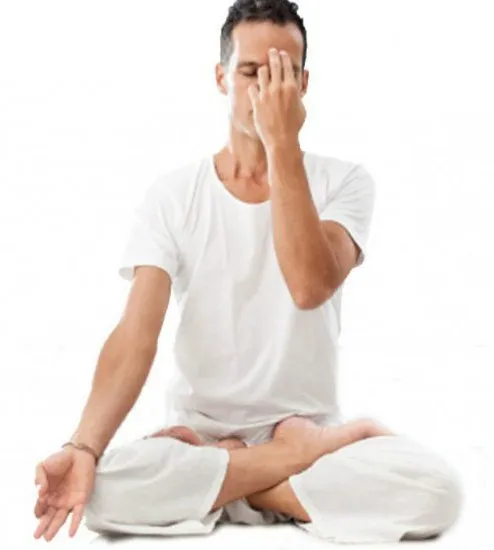
Frequently Asked Questions
Question: Can Ayurveda treat Tinea Versicolor?
Answer: Yes, Ayurveda can treat tinea versicolor effectively. There are herbs and herbal remedies available in Ayurveda that have been used since centuries to treat fungal infections like tinea versicolor.
Question: Can tinea versicolor spread from person to person?
Answer: Tinea versicolor does not spread from person to person.
Question: How long does it take for tinea versicolor to clear up?
Answer: The duration of treatment varies from person to person. On an average, Ayurvedic treatment can take up to weeks or months for skin colour to return to normal.
Question: How can tinea versicolor be stopped from spreading?
Answer: There are various ways such as: not using oily skin products, staying out of hot and humid weather, staying away from activities that cause a lot of sweating etc.
References
- P V Sharma, Charak Samhita, Chikitsa Sthana Chapter No. 7, Shlok No. (18-20), Chaukhamba, Varanasi, 2014.
- Shastri Ambika Dutta, Sushrut Samhita, Chaukhambha Sanskrit Sansthan Varanasi, 4th edition 1976, Nidaan Sthana 5/5, Page No. 247
- Tripathi Indradev evam Tripathi Daya Shankar, Yogaratnakara, Chaukhambha Krishnadas Academy Varanasi, Edition 2013, Kushta Nidana Chikitsa Prakarana, Shlok No. 22, Page No. – 644.
- Sahil Gupta, Ayurvedic Aspects of Allergies and Fungal Infections, Edition 2021, Fungal Infection Chapter No. 41, Page No. 259.
Dr. Gupta’s IAFA is the leading institution in the management of various immune related disorders. IAFA is the most reliable institution that provides ultimate Ayurvedic treatment for your illness.
IAFA holds your hand to wellness!!
Was this Page Helpful?
So IAFA Ayurvedic Management of Tinea Versicolor is Just 3 Steps Away!

01. Connect With Us
Share your history of illness or Book your appointment

02. Consult With Us
Dr. Gupta a certified Ayurvedic Allergist Consultant

03. Root Cause Treatment
Get an accurate diagnosis, medicines, diet & lifestyle change
Tinea Versicolor – Case Studies
Real Case Studies of Successfully Treated Patients from All Around the World by IAFA Ayurveda®

9 Year Old Female Patient Recovered from Chronic Allergic Bronchitis – A Case Study
This case study presents a 9-year-old female patient who has successfully recovered…

12-Year-Old Child Recovered from Sun Allergy and Polymorphous Light Eruption (PMLE) – A Case Study
This is a case study of a 12-year-old child who has successfully…

40-Year-Old Female Patient Recovered from Dyshidrotic Eczema and Onychomycosis – A Case Study
This case study highlights the successful recovery of a 40-year-old female patient…

40-Year-Old Female Patient Recovered from Urticaria and Angioedema – A Case Study
This case study focuses on a 40-year-old female patient who has successfully…
Read More Articles

Bed Wetting (Shayyamutra)
Bedwetting is an embarrassing habit in some children where they are unable…

Baby Care (Balopacharaneeyam)
It is a comprehensive guide for Baby Care as per Ayurveda. IAFA provides…

Attention Deficit Hyperactivity Disorder – ADHD (Vatika Unmada)
Contact IAFA Ayurveda® to get safe and natural remedies for the treatment…

